|
By Alexandria Staubach Time-sensitive functions of the Milwaukee County Circuit Court are moving to children’s court in the Vel R. Phillips Juvenile Justice Center during the Republican National Convention (RNC). “The courthouse is already difficult to get to” said Chief Judge Carl Ashley in an interview with WJI. He anticipates that security checkpoints, crowds, and the unavailability of parking will dramatically intensify with the 50,000 people expected to participate in RNC activities. WJI talked with Ashley and Chief Court Administrator Stephanie Garbo about the court’s plans during the convention, which runs July 15 through July 18 in downtown Milwaukee. Garbo is helping to orchestrate the move to children’s court, which is located west of I-41 at 10201 W. Watertown Plank Rd. Garbo, like other Milwaukee-area officials, is organizing essential functions in and around the security footprint of the RNC without a complete picture of the U.S. Secret Service’s plans for the area. Garbo said a full outline of anticipated changes to court operations is yet to be announced but is expected in the coming weeks. Some of the changes Garbo anticipates include:
The Milwaukee County Jail will remain accessible to visitors and attorneys, but visitors will likely have to pass through intensified security to get to the building. As court plans remain in flux, Garbo encouraged anyone with court business the week of the convention to monitor Milwaukee County’s convention website, which will contain the most up-to-date information as the convention approaches. At a press conference in February, Mayor Cavalier Johnson also announced a city convention website, but as of today, both websites largely contain placeholders for plans that are still being developed and encourage the public to check back soon. The courts are not the only county functions likely to experience reorganization during the RNC. The county anticipates changes to several bus routes that ordinarily penetrate the RNC’s security zone. Currently, the county website for the RNC informs riders that “the security plan for the 2024 RNC is still in development – as soon as its finalized, riders will be alerted to impacts on bus routes” and “changes to the RNC’s security perimeter may happen on short notice.” Milwaukee County Courthouse. Photographs by Alexandria Staubach.
0 Comments
By Alexandria Staubach
The Milwaukee County Board of Supervisors recently enacted an ordinance designed to make public testimony at standing committee meetings easier and more accessible. While the ordinance is not mandatory, the Board of Supervisors said it hopes the ordinance will establish a best practice and procedure for public comment. The chairperson of any standing committee is now charged with placing agenda items on which members of the public have registered to speak in front of items on which no one has registered to speak, applying the same time limits on commentary “regardless of the content of (public) testimony,” and reading comments received virtually into the record of the meeting before voting on a given agenda item. The ordinance comes in response to a 2021 committee meeting at which a resolution creating a “right to counsel” for Milwaukee County residents facing eviction or foreclosure was considered. Some members of the public were forced to wait more than six hours to speak, as agenda items garnering no public comment were considered first. In addition to approving the county’s annual budget (adoption generally takes place in early November), the county's nine standing committees establish what programs and services will be offered by the county. This spring’s election resulted in the election of four new supervisors: Justin Bielinski (16th District), Jack Eckblad (4th District), Sky Z. Capriolo (15th District), and Anne O’Connor (1st District). If you live in Milwaukee County you can find your supervisor here. By Margo Kirchner
When John Remington takes his seat this month as Milwaukee County Circuit Court judge, he will be the eighth new judge joining the court during the past 12 months. And once newly elected Marisabel Cabrera takes her seat, about one-fifth of the judges on the court will have been appointed since June 2023. Cabrera’s term starts Aug. 1. For comparison, just one judge started on the court in all of 2022 and two in 2021. “Is it unusual to have this many (new judges)? Yes, no question,” said Milwaukee County Circuit Court Chief Judge Carl Ashley in an interview with WJI. Cabrera and Judge Ana Berrios-Schroeder were elected. The other seven new judges were appointed by Gov. Tony Evers to fill vacancies. (Several of the appointees then won election in April to serve new terms beginning Aug. 1.) A chart below shows the new judges and their start dates based on information provided by Ashley. Milwaukee County Circuit Court has 47 judicial seats (called branches). In lesser-populated counties, some with just one judicial seat, the judges hear all varieties of cases. But in Milwaukee County, judges are assigned to specific divisions such as felony, misdemeanor, civil, probate, children’s, or small claims court. Ashley said that historically most new judges have started in children’s or misdemeanor court. However, when a judge had prior experience in a particular area of the law, a start in another division has occurred. Becoming a judge is a transition, he said, and “We want to be supportive of the judge” during that transition. Veteran judges are always helpful for the new judges, he said. In Milwaukee County, judges generally rotate after four years maximum in a particular division. For rotations, the chief judge takes into account where the judges want to be assigned, their seniority, and other factors. Ashley said we wants to have the best judges where they are needed. “Does (the number of new judges) impact the ability to assign judges? Yes,” he said, adding that it's all part of balancing and “just something we have to adjust for.” “As one would expect, there’s a bit of a learning curve that every judge experiences as they acclimate themselves to being a judge. As chief judge that impacts how judge assignments are made, but that is the nature of the process,” Ashley told WJI. The number of new judges is not the only change that today impacts initial judge assignments to children’s court, Ashley said. Children’s court has changed as well, with nearly 10 homicide cases in children’s court in the past year, compared with perhaps one per year before then, he said. “Things have changed on both ends." Ashley noted his respect for the judges who have retired recently. “I certainly want to acknowledge our veteran judges who have served our community for decades with great skill and commitment. The legacy of their mentorship has been and will be invaluable to our newer judges,” he said. Currently, a committee led by Deputy Chief William Pocan and District 1 (Milwaukee County) Court Administrator Stephanie Garbo is studying rotation procedures for Milwaukee County Circuit Court. Ashley said the process for rotations was last assessed about 15 years ago. The committee gathered survey data and other input from attorneys, current and retired judges, and the public. The committee will soon present Ashley with recommendations for any changes to the processes and policies governing rotations. In Milwaukee County, Marisabel Cabrera and Rochelle Johnson-Bent vie for the open Branch 43 seat after Judge Marshall B. Murray chose not to run for reelection. Cabrera is a member of the Wisconsin Assembly and an attorney in private practice at Cabrera Law Office. She graduated from Michigan State University College of Law in 2002. Her resume is here. Johnson-Bent is an attorney and manager of procurement and risk management for the Milwaukee Public School District. She graduated from the University of Wisconsin Law School in 2010. Her resume is here. WJI asked each of the candidates to answer a series of questions. The questions asked are patterned after some of those on the job application the governor uses when he is considering judicial appointments The candidates' answers are printed as submitted, without editing or insertion of “(sic)” for errors.
Two candidates are vying for a seat on the Milwaukee County Circuit Court bench. The seat in Branch 43 is open due to Judge Marshall Murray's decision not to run for re-election. The election is April 2, 2024. Candidate Rochelle Johnson-Bent (below left) is an attorney in the Milwaukee Public Schools system. Candidate Marisabel Cabrera (below right) is an elected Wisconsin Assembly representative and attorney at Cabrera Law Office. The candidates joined WJI in person on Jan. 31, 2024, to introduce themselves and answer questions from attendees. The event was held as a luncheon at Riverfront Pizzeria in Milwaukee, hence the imperfect visual quality and some background noise at times. By Alexandria Staubach While jury service is touted as one of the highest forms of public service an American can perform, it’s difficult to find a person who will admit they enjoy it. Jury duty has a reputation for being inconvenient, and time-consuming. It generally comes at a significant personal expense and involves a mind-numbing number of hours spent waiting. Finally, it’s a little intimidating and at least a bit uncomfortable. Read: If you’re excited to sit in judgment of another person’s actions it’s unlikely any lawyer really wants you on their jury. Nevertheless, under Wisconsin law, jurors are eligible for up to five days of service within a month or until any case they have been seated on is over. You can serve as a juror for only one month in a four-year period. The pay is abysmal, especially if you’re missing work and your employer isn’t compensating you. Within 30 days of your service, a half day will earn you $17, a full day, $25. As a lawyer I’ve been on the other side of a jury plenty of times arguing my case, but I’ve never been called for jury duty. I was to report for service on Monday, Oct. 16, at 8 a.m., but the day began well before then. Unless you’re taking public transportation or getting dropped off, you’ll need to locate and pay for long-term parking. No location is particularly close, and none is particularly affordable. The cheapest option, which is often full, is a half-mile’s walk and $10 a day. This is somewhat compensated for by the fact that Milwaukee County's courthouse is beautiful. The neoclassical building was completed in 1931 and includes Beaux-Arts details with sculptures and truly interesting tile and marble work. It is on the National Register of Historic Places. While it retains much of its charm, it also holds the grit of having dispensed nearly 100 years of justice. There is a significant security line around 8 a.m., and it is bustling with attorneys, witnesses, family, observers, and jurors all sharing the same crowded hall to enter. I disarmed myself of my cell phone, keys and laptop to proceed through the metal detector. Once through, I made my way to the third-floor jury management room, where I began my day as a potential juror. While the wait was often long, everyone interacting with jurors is incredibly kind — so respectful, so appreciative. As if to silently say, “it’s the least we can do.” After two hours of reading, people watching, and chatting with my fellow compatriots in limbo, at 10 a.m. my name was called. Sheriff’s deputies lined us up by assigned number in the hall outside jury management and marched us like ducks from the main courthouse to the Safety Building, traversing a city block and several flights of stairs in a group of 30. The Milwaukee County Safety Building is a sky bridge and world apart from the courthouse. The Safety Building was originally constructed in 1929 and housed the central police station, city and county court, city and county jails and the county sheriff. In the 1990s the county moved their detainees to a newer facility, paving the way for the Safety Building to house additional courtrooms and legal offices. This part of the building is distinguished from its neoclassical counterpart by its wholly custodial aesthetic. We arrived at the courtroom of the Hon. Jeffrey A. Wagner and again lined up by assigned number. Wagner took the bench in 1988 and his tenure predates the Safety Building’s courtrooms. Standing in line, we waited in the hall to be called, but 20 minutes later we were dismissed as the scheduled trial received a continuation. There was a large collective groan and everyone waddled back to jury management. I resumed my seat and was soon called for another potential trial. We lined up again by assigned number and were guided back over the river and through the woods to the Safety Building (I cannot over emphasize how long this walk is), this time to the courtroom of the Hon. Laura A. Crivello. Crivello was appointed to the bench in 2018 and elected in the spring of 2019. She served as an assistant district attorney from 1995 until then. She runs a tight ship. When we arrived in Crivello’s courtroom we were seated by number. The space was cramped with 30 prospective jurors, two people at the defendant’s table, two people at the prosecution’s table, a court reporter, two clerks, and a bailiff.
The judge introduced the parties and the charges. The defendant was charged with two counts of recklessly endangering safety and one count of felon in possession of a firearm. I was surprised to see he was dressed in an orange jumpsuit and was “pro se” (representing himself). On multiple occasions Crivello explained that these were his choices, and his choices alone. Next came questioning called “voir dire,” which Crivello informed the panel meant “to speak the truth.” Crivello asked about disabilities, hearing, our collective ability to remain objective, and any experiences with the criminal justice system that might make us unfit for this jury. Despite grumbling outside the courtroom, every prospective juror was fully on board to participate. No one attempted lame excuses about why they couldn’t be there; no one cited dubious bias that would prevent them from participating. Having conducted many jury trials as a lawyer, I was surprised and impressed by the genuine and full responses given to the judge. Then we broke for lunch, which included an additional hour of unanticipated waiting. When we finally returned to the courtroom, the defendant had changed out of his jumpsuit and put on a dress shirt and slacks. We were each asked to stand and tell the court our first name, occupation, marital status and spouse’s occupation, the name and age of any children, where in the county we resided, and a hobby. Once everyone had completed this, the state was permitted to ask questions of individuals. There was significant follow-up for those in the medical field – whether they’d dealt with trauma and gunshot wounds – curious given a lack of charge for assault or anything resulting in bodily injury. Finally, the defendant asked us questions. Instead of asking questions of individuals, he asked the group whether we would be fair to him, whether we would hold it against him that he was representing himself, and whether we thought we could make the effort to understand him, even though everyone else in the courtroom was professionally trained. On more than one occasion Crivello corrected him or reminded him what was and was not permissible, cutting him short whenever he asked to make a record. With that, we were excused from the courtroom. Next came a final stretch of waiting. I suspect from experience that the defendant was likely permitted to make whatever record he wanted and the parties then haggled over who would be kicked for cause (because they indicated they could not be unbiased or had some other impediment to service) and who would be each side’s peremptory strikes (Wisconsin law permits each side to eliminate four jurors without reason). Fourteen jurors (twelve impaneled and two alternates) were selected from the first 26 of us. I was last in the box, number 30, so the math to be selected was never in my favor. That was it. We were released and again sent back to jury management at 4 p.m. Jury duty is a lot of waiting, and nearly everyone complained. For most people it’s also a lot of wondering about the many conversations taking place behind closed doors. In the end, though, I enjoyed it and I suspect – deep down – a lot of other people did too. The stakes are high. Everyone treats everything with reverence and respect. In an age when that’s difficult to come by, it was refreshing to know that decorum and civil duty live on in the Milwaukee County Courthouse, at least on this day. By Margo Kirchner Milwaukee County’s criminal justice system has not fully recovered from pandemic pressures, and some data results from a recent study of the county’s justice system are not easily explained, say a researcher and five local justice-system leaders. The pandemic showed how the county’s criminal justice system is an ecosystem, with changes in one area impacting other areas, several said. However, the leaders of multiple sectors of the county’s criminal justice system continue to work together to get the system back to its pre-pandemic functioning, or better, they said. Milwaukee Police Department Chief Jeffrey Norman; District Attorney John Chisholm; Tom Reed of the State Public Defender’s Office; and the current and former chief judges of Milwaukee County Circuit Court, Carl Ashley and Mary Triggiano, spoke at a Marquette University Law School Lubar Center event last week. They were joined by Wisconsin Policy Forum President Rob Henken. The speakers discussed an August 2023 Wisconsin Policy Forum report analyzing data from 2018 through 2022. The talk was moderated by Lubar Center Director Derek Mosley. Henken started with discussion of his report “Under Pressure: The Milwaukee County Justice System’s Recovery from COVID-19,” highlighting the following quantitative findings:
Henken said the causes of these results could not be pinpointed. However, his research suggested that total offenses may have increased because police were addressing during the pandemic mainly priority calls rather than conducting proactive policing activities. In addition, the number of MPD sworn officers decreased 17% (more than 300 officers) from 2018 through 2022, which may have caused the decrease in arrests, he said. Staffing declines at the district attorney’s office may have resulted in fewer charges, he said. Henken suggested that the system’s recovery from the pandemic is now impeded by workforce challenges. Norman agreed that there is “still a lot we don’t know on why we’re where we’re at.” As explanation for some of the policing data results, such as the reduced arrest numbers, he pointed to problems during the pandemic with insufficient housing for arrestees, which meant that those accused of violent felonies were held while others were released. He also noted the shifting priorities and measures from the administrations of his predecessors. While one prior chief focused on quantitative measurements of policing such as the numbers of arrests, subsequent chiefs transitioned to qualitative measurements. “Policing is an always evolving activity,” he said. Chisholm noted how the criminal justice became a funnel for societal problems — and how that funnel has been overflowing. What is happening in the community affects what is happening in the criminal justice system, too; things are connected, he said. As an example, shutting down schools during the pandemic may have related to young people stealing cars; shutting down resources for victims of domestic violence may have led to more domestic violence issues, he said. He noted that he would like to get back to “the crappy place we were in 2019,” but said there is no finger pointing between the speakers about problems such as high homicide rates — “we all share this.” Reed said the pandemic caused a problematic reduction in the number of SPD attorneys and private bar attorneys willing to take cases when the SPD has a conflict or heavy workload. Court proceedings were put on hold until an attorney could be appointed, frustrating clients, he said. Reed said that 85% of people charged with crimes qualify for appointed counsel due to poverty. Before the pandemic, the ages of SPD attorneys and private-bar defense attorneys “skewed older,” and when the pandemic hit many older attorneys chose to retire, Reed said. One reason for retirement early in the pandemic may have been that before vaccines, older attorneys were reluctant to visit clients in jails and prisons, where COVID-19 was spreading easily. The Legislature’s increase in SPD pay stabilized his staff, and the increased private bar rate (both are features of the recent state budget) helps, Reed said. His office is down to about 100 cases needing attorneys. Former Milwaukee County Chief Judge Triggiano described the leadership group she pulled together even before the nationwide COVID-19 closures in early 2020. The court initially kept employees and litigants at home but worked around the clock to bring jury trials back while keeping participants safe. Jury trials resumed in the summer of 2020. Current Milwaukee County Chief Judge Carl Ashley, who was part of that leadership group, said Triggiano’s inclusion of system representatives such as those from the DA’s office and SPD may have been unusual, but the group discussed what the system participants could do differently to handle pandemic concerns. Ashley is continuing such meetings to keep discussing how the court and system participants can operate differently to improve. He is proud of the relationships he has with the other system partners. The court has about 5,000 pending felony cases, 1,500 of which are backlog, he said. Ashley noted that “we are not going to prison our way out” of safety issues. When asked by Mosley what he needed for the MPD going forward, Norman said “more trust, from everyone,” but he acknowledged that his department needed to earn that trust. When asked by an audience member whether the elimination of the city residency requirement for MPD officers reduced that trust, Norman said that when an officer responds it should not matter where that officer lives. His officers are expected to provide their services and if they fail to, or do it with disrespect, city residents should report it to the department, he said. Reed said that he would like more honor and acknowledgment of the work by the people at the MPD, DA’s office, SPD, and court who perform their work as a calling. Even when mistakes are made, people should “know that it’s still a noble profession.” The Wisconsin Policy Forum report found that a 2021 spike in serious offenses appeared driven by motor vehicle thefts. And while homicides and motor vehicle thefts in the City of Milwaukee increased significantly between 2018 and 2022, all other serious offenses (such as larceny theft, burglary, robbery, and rape) combined dropped. Homicides in the City of Milwaukee increased from 100 in 2018 to 214 in 2022. Motor vehicle thefts in the city spiked from 4,528 in 2020 to 12,344 in 2021, then declined to 9,447 in 2022, though correction of an MPD technical error in reporting may reduce those numbers slightly, according to the report. The report also described the continuing backlog of felony cases. In March 2023 the number of felony cases in Milwaukee County Circuit Court stood at 5,032, compared with 3,512 cases at the end of December 2019. The number of pending felony cases peaked in January 2022 at 5,405. For a year or two prior to the pandemic, the median age of a felony case in the court ranged between 150 to 200 days. The median age peaked in August 2022 at 331 and at the end of December 2022 was still high at 289 days, according to the report. WJI Executive Director Margo Kirchner chats with Meagan Winn, director of Milwaukee County's Eviction Diversion Initiative. The Eviction Diversion Initiative is a new program providing tenants and landlords with information and resources to resolve housing issues both inside and outside of court. Avoiding eviction litigation can be important for tenants, as an eviction judgment from (or even the filing of) an eviction lawsuit can make it difficult for tenants to find future housing. The initiative connects tenants and landlords with resources such as rental assistance, housing counseling, legal assistance, and mediation. Funded by a grant from the National Center for State Courts, the program includes data collection and development of user-friendly court rules and procedures. Milwaukee County was one of the first cohort of states and municipalities selected by the National Center for State Courts for funding to pilot eviction-diversion strategies.  Chief Judge Mary Triggiano reported that Milwaukee County Circuit Court is emerging from the pandemic, and the public and justice system participants can look forward to the future with optimism. The misdemeanor court backlog is gone, and 475 jury trials have taken place since July 2020. Although “it was no cake walk,” the court’s commitment to public health and safety allowed the court to reopen more quickly than other courts around the state, she said. Triggiano gave a state-of-the-court address at the Milwaukee Bar Association’s luncheon meeting on Wednesday, October 12. “Sometimes things worked out” but other times the court “had to go back to the drawing board,” she said. She called the pilot misdemeanor night court run by Judge Christopher Dee a success and noted the addition of multiple felony courts to address the felony court backlog, with reserve judges and court reporters hired using extra funding. Milwaukee County’s felony backlog still makes up about 12% of the backlog statewide, she said. She thanked Deputy Chief Judges Judge William Pocan and Carl Ashley for their assistance in guiding the court through the pandemic while managing their own caseloads. She also thanked Wisconsin Court of Appeals Judge Maxine Aldridge White “for always taking [her] phone calls” and providing advice. Triggiano indicated that despite the court’s best efforts, the public health crisis took a toll on court staff, causing a wave of resignations and retirements. In addition, the court is impacted by the shortage of defense attorneys available for appointment by the State Public Defender. However, recent funding has allowed for the hiring of eight law clerks for the civil division. The court has received a grant for an eviction diversion coordinator. And Triggiano and Clerk of Court George Christenson worked on a budget that increases staff pay to attract and keep high-quality employees. The court also plans to expand its mental health court, she said. Following Trigginao’s talk a panel of three judges answered questions about the court’s adoption of videoconferencing for court proceedings. Judge Jane Carroll indicated that videoconferencing “is here to stay” and was one good thing that came out of the pandemic. The court now needs to figure out how to best incorporate it going forward, she said. Judge David Feiss remarked that virtual proceedings have made the court rethink its operations. For instance, criminal court had often held “cattle calls” with many cases given the same time for appearance and a full courtroom waiting for cases to be called, he said. Virtual proceedings caused a shift to staggered schedules, which “has improved the quality of the services we provide,” he said. Judge Kevin Martens noted that virtual proceedings may have increased access for some self-represented parties who previously faced challenges in getting to the courthouse. Martens was chief of the civil division during the pandemic and estimated that the length of time civil cases took to resolve probably doubled during the pandemic. However, even though resources may have been taken from the civil division to help the criminal division tackle the backlog there, the pandemic impacted the civil division less than the criminal division because many civil hearings could easily move to a virtual format. Carroll echoed that comment. Because the family division does not hold jury trials and rarely involves someone in custody, that court was able to move very quickly to virtual proceedings, she said. Martens indicated that when jury trials returned to the courthouse the entire civil division was allowed only one civil trial per week. That number is now up to four trials per week, he said. On Aug. 2, four Democrat candidates running for the Milwaukee County sheriff position joined WJI in a virtual forum to answer questions about their professional experience, issues in the sheriff's department, and plans for the office if elected. Candidates (alphabetically) Denita Ball, Brian Barkow, and Thomas Beal appear on the ballot. Mohamed Awad is conducting a write-in campaign. Voters will choose between the candidates in the primary election on Aug. 9. Because no Republican is running, the winner of the primary is expected to win in November as well. If you missed the Salon, or if you want to watch or listen again, click on the image below to view the recording. (Note: Candidate Awad appears in the video without a visual of his person. He did appear visually on screen in the Zoom meeting. However, because of audio difficulties he had to dial in to be heard, so a truncated phone number appears in the video while he is speaking.) Recordings of this and several past Salons are also available on WJI's YouTube channel here. |
Donate
Help WJI advocate for justice in Wisconsin
|
Copyright © 2024 Wisconsin Justice Initiative Inc.
The Wisconsin Justice Initiative Inc. does not endorse candidates for political office. The Wisconsin Justice Initiative Inc. is a 501(c)3 organization.
The Wisconsin Justice Initiative Inc. does not endorse candidates for political office. The Wisconsin Justice Initiative Inc. is a 501(c)3 organization.




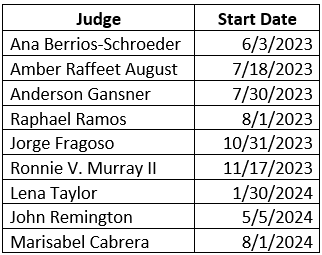


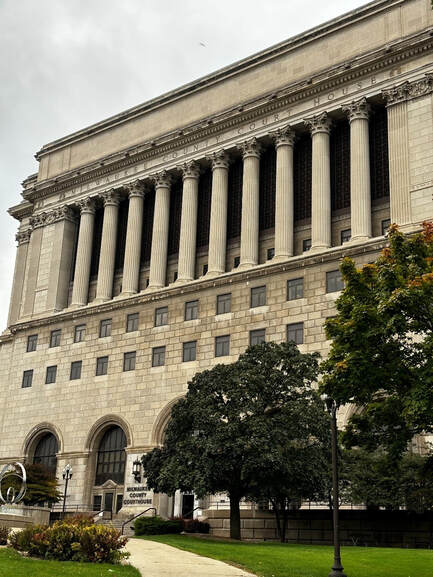
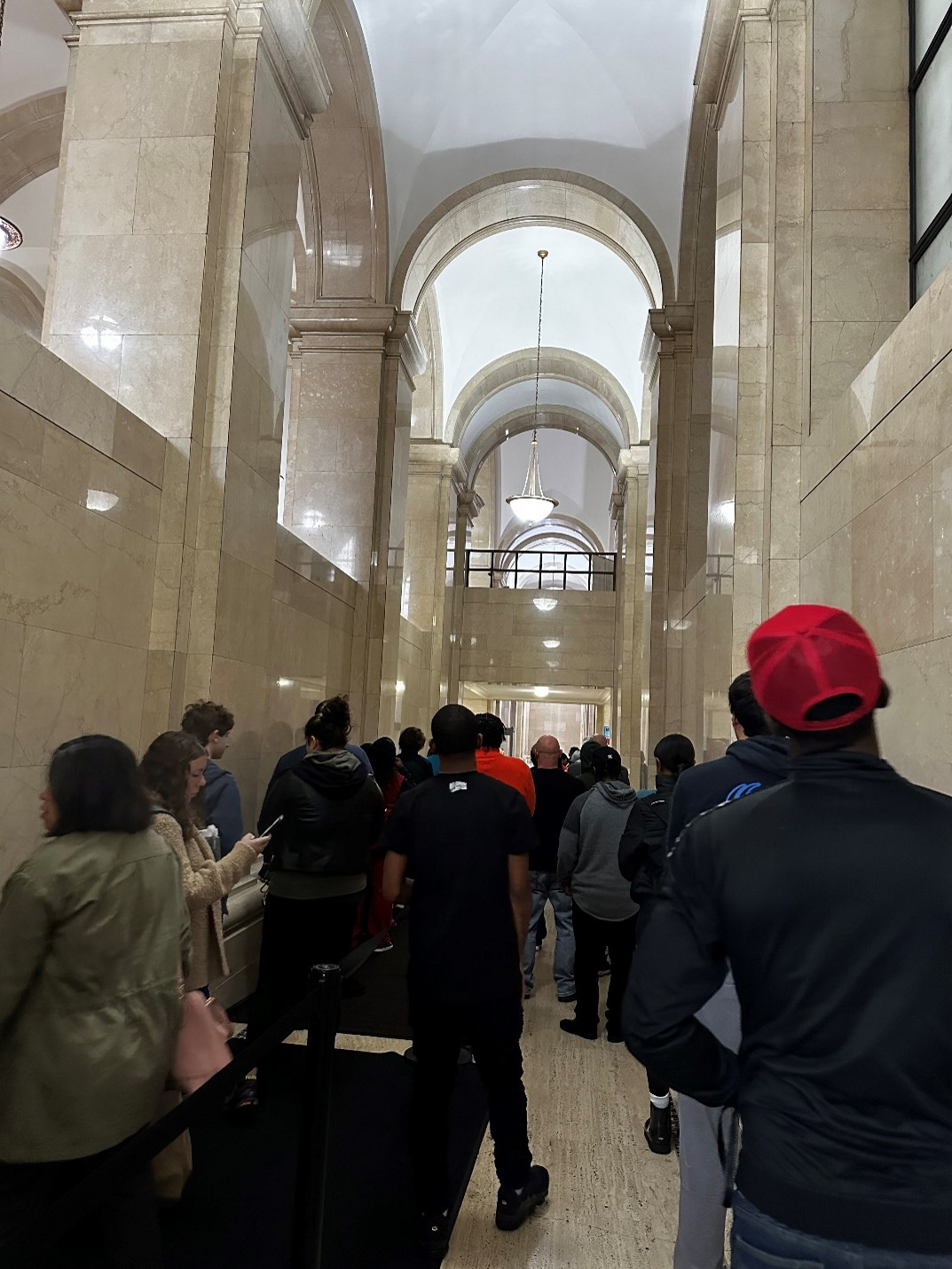
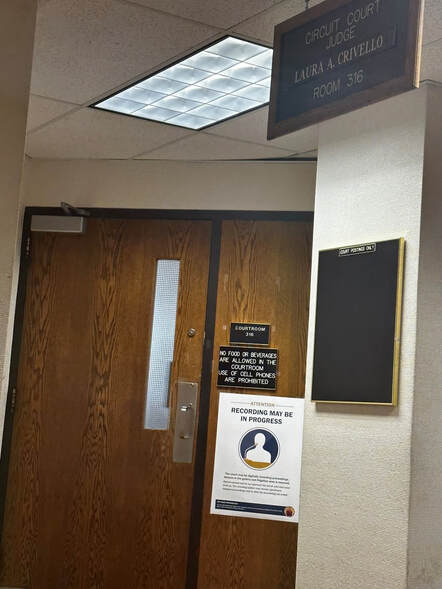
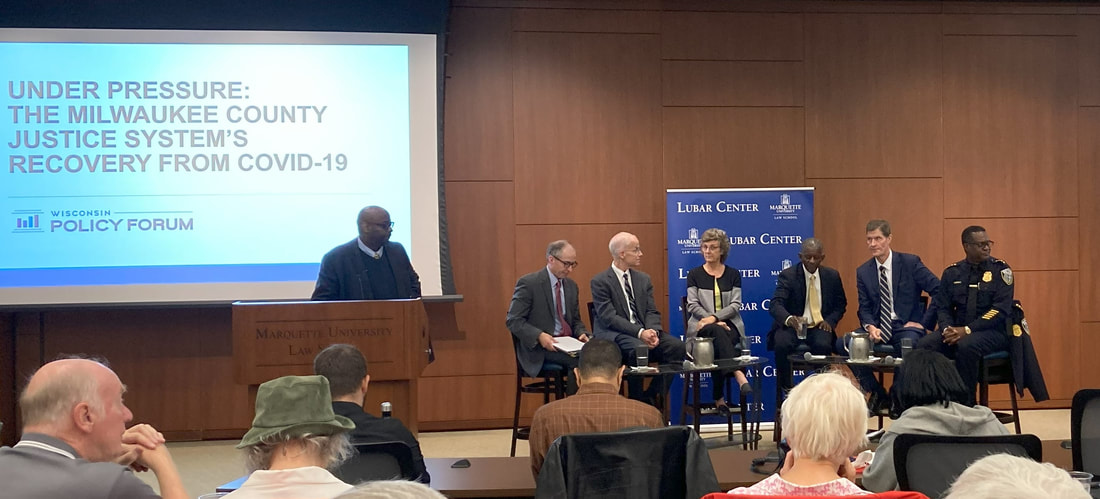
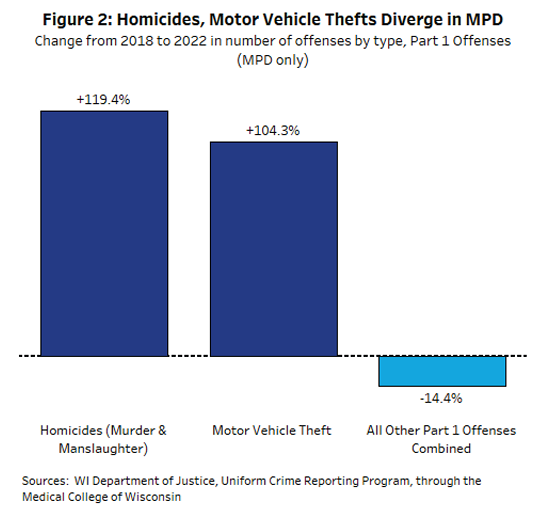
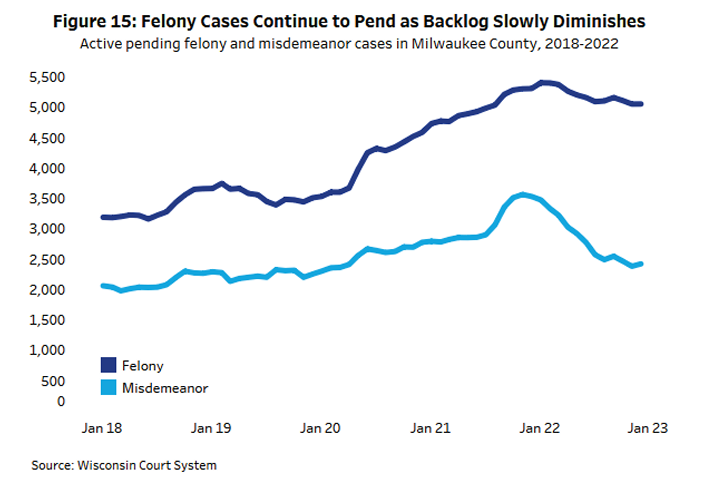
 RSS Feed
RSS Feed